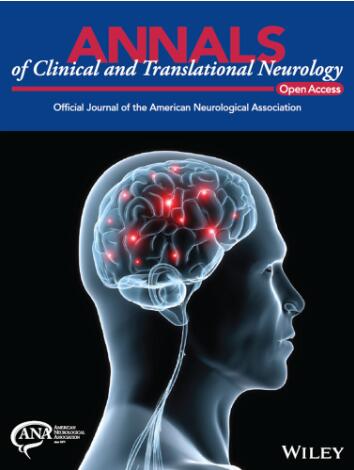新表型和深内含子变异扩展th相关多巴反应性肌张力障碍谱。
IF 4.4
2区 医学
Q1 CLINICAL NEUROLOGY
引用次数: 0
摘要
大约20%的多巴反应性肌张力障碍(DRD)病例仍未得到遗传上的解决。利用全基因组测序,我们在一名年轻的DRD患者中发现了两种TH变体,包括一种新的深内含子变体。基因分析证实这种变异导致异常剪接。与典型的th相关DRD病例相比,患者表现出非典型的疾病进展,表现为全身性肌张力障碍、发作性肌张力低下、帕金森病和口腔下颌运动障碍。这些发现,包括第一个已知的深内含子TH变异,扩大了我们对TH相关DRD的表型和基因型谱的理解,有助于临床评估。本文章由计算机程序翻译,如有差异,请以英文原文为准。
Novel Phenotypes and Deep Intronic Variant Expand TH-Associated Dopa-Responsive Dystonia Spectrum.
Approximately 20% of dopa-responsive dystonia (DRD) cases remain genetically unresolved. Using whole-genome sequencing, we identified two TH variants in a young DRD patient, including a novel deep intronic variant. Minigene assays confirmed that this variant causes aberrant splicing. The patient exhibited an atypical disease progression compared with typical TH-associated DRD cases, presenting with generalized dystonia, episodic hypotonia, Parkinsonism, and oromandibular dyskinesias. These findings, including the first known documented deep intronic TH variant, expand our understanding of TH-associated DRD's phenotypic and genotypic spectrum, aiding clinical evaluation.
求助全文
通过发布文献求助,成功后即可免费获取论文全文。
去求助
来源期刊

Annals of Clinical and Translational Neurology
Medicine-Neurology (clinical)
CiteScore
9.10
自引率
1.90%
发文量
218
审稿时长
8 weeks
期刊介绍:
Annals of Clinical and Translational Neurology is a peer-reviewed journal for rapid dissemination of high-quality research related to all areas of neurology. The journal publishes original research and scholarly reviews focused on the mechanisms and treatments of diseases of the nervous system; high-impact topics in neurologic education; and other topics of interest to the clinical neuroscience community.
 求助内容:
求助内容: 应助结果提醒方式:
应助结果提醒方式:


